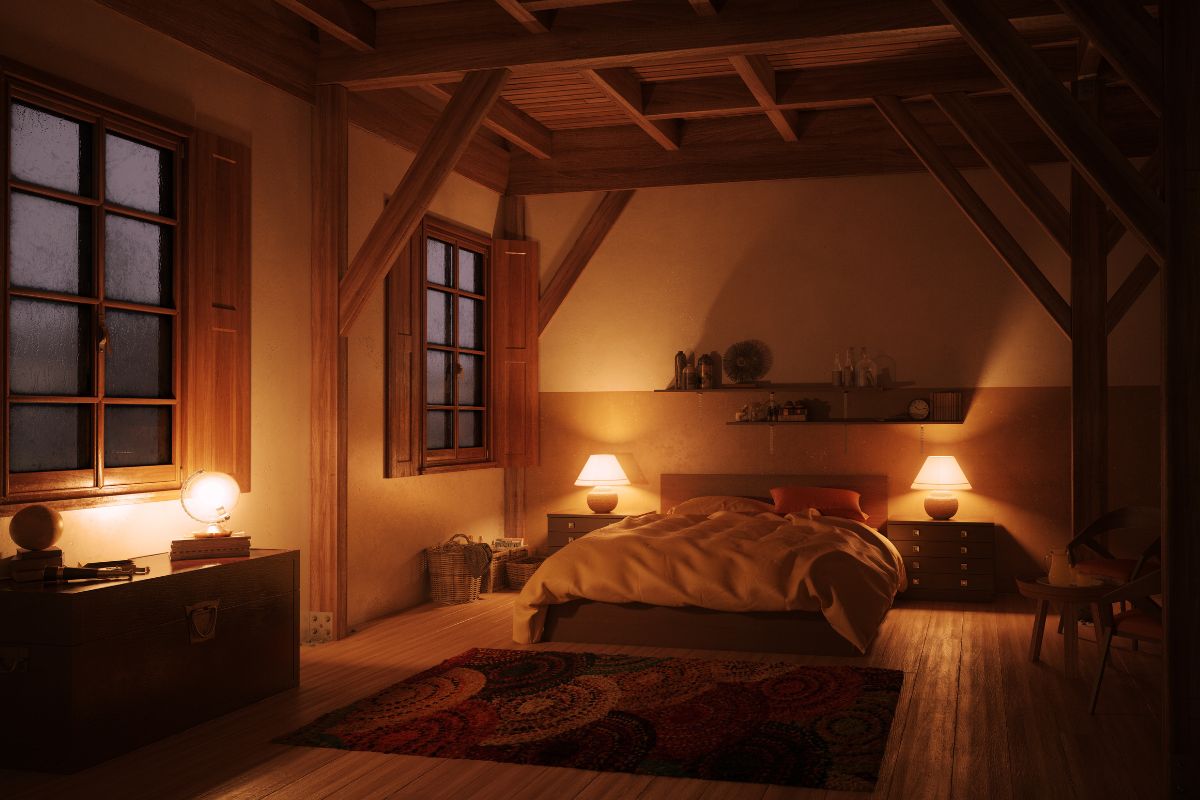
Sleeping with light
Light or dark - which is better for healthy sleep? Darkness is actually a prerequisite for healthy sleep, and especially for Bioenergetic Sleep®. This has now been scientifically proven. Sleeping in the light could increase our risk of diabetes and cardiovascular disease [1]. Light sources at night could even increase the risk of cancer [2].
Light has an enormous influence on how we sleep, how quickly we fall asleep and how fit we are during the day. Many people find light at night calming and relaxing. In this article, you will learn how to use light correctly to avoid disturbing your sleep and even promote it. We also look at the topic of children's sleep and how important light is for the little ones to rest.
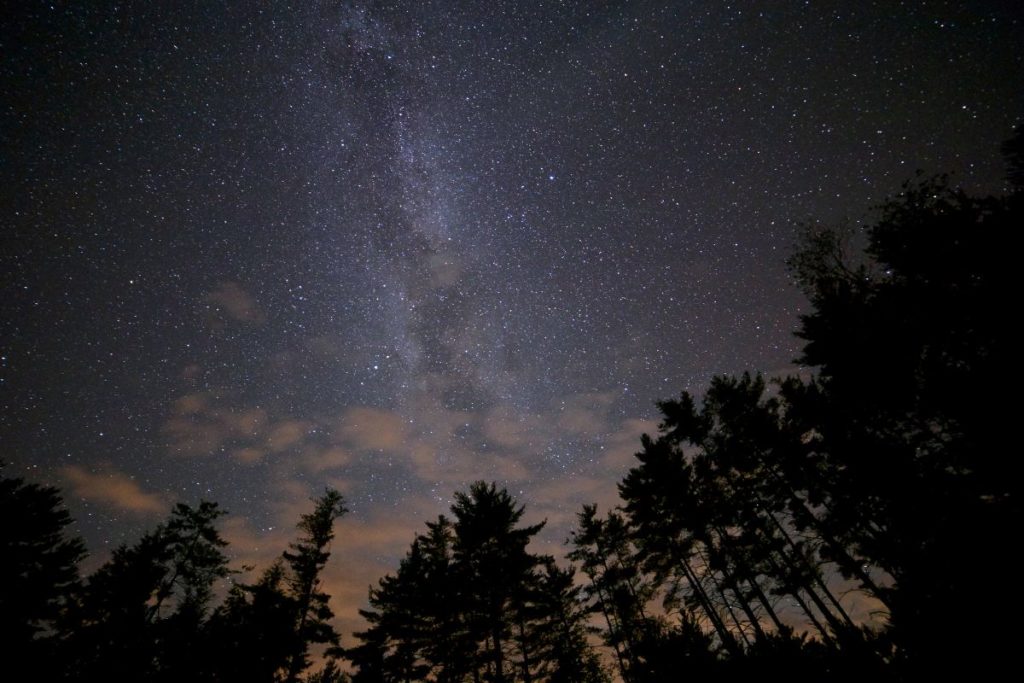
It's dark at night in nature
Science has a clear position on sleep and light - it is better for us to sleep in complete darkness. But what is it like in nature? In untouched nature, far away from civilisation, it is actually pitch dark most nights. As soon as the sun goes down, there are no external light sources. If we imagine how we lived and sought shelter in caves, it becomes even clearer that we humans probably slept in complete darkness most of the time. The natural light of the sun is therefore also the clock for our day-night rhythm, the so-called circadian rhythm. We woke up with the sun and went to sleep with it - the light of the sun during the day gave us time and energy for hunting, gathering and living. The darkness of the night gave us time to rest and regenerate. There was only one natural source of light apart from the sun - fire.
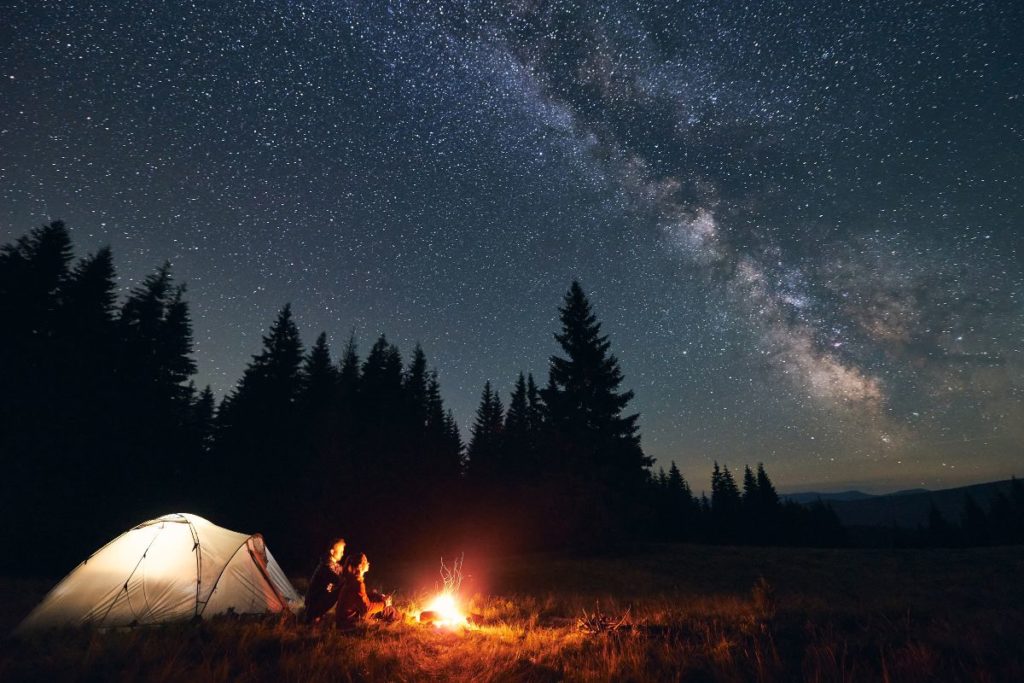
The exception - fire
The soft, reddish light of a campfire or candles has a calming effect, provides orientation and protects against wild animals. These are probably the reasons why many people leave the light on at night. The natural light of fire has many positive properties for us humans:
-
Safety
-
orientation
-
Relaxation in the evening
-
Habit effect
We used to eat and spend time together by the fire in the evening, it served as natural protection and gave us orientation in the dark. The same light in the evening also creates a familiarisation effect that helps us to fall asleep. Our brain associates the natural red light with going to bed and switches into rest and relaxation mode.
But we live in the here and now, and a lot has changed. Light sources are diverse and often far removed from the natural spectra that have accompanied us for so long. However, with a little knowledge and care, we can make our lighting environment as natural as nature intended.
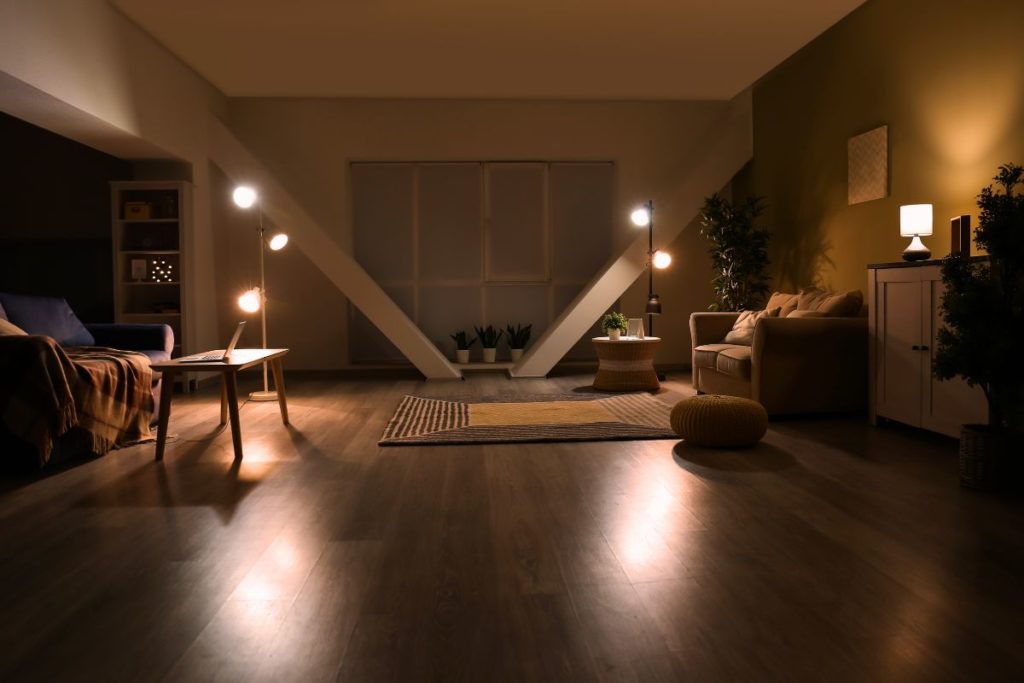
Sleep properly with light
With these simple tips, you can organise your ambient light in the evening (or morning) so that it supports your day-night rhythm rather than disrupting it. The light can also help you fall asleep and stay asleep. The decisive factor here is the colour temperature of the light, which is measured in Kelvin (K). The warmer the light, the lower the Kelvin number and the redder the colour appears. The colder the light, for example the light of the midday sun, the higher the Kelvin number and the bluer the colour appears.
The following graphic gives you a good overview:

The right light in the evening
As soon as the sun slowly sets, warm, subdued light between 2,700 and a maximum of 3,000 Kelvin is recommended. This light is also found at sunrise and sunset and promotes the production of the sleep hormone melatonin. Modern architecture is already taking up the theme of "human-centred lighting" and adapting the artificial lighting in interiors to nature. Unfortunately, this is only the case in very modern buildings and even there it is not always implemented consistently.
Avoid blue light
Blue or cold light with a spectrum of around 3,000 Kelvin signals to our body that the sun is shining and it is daytime. Melatonin production is suppressed. The problem is that most screens (TV, laptop, mobile phone, lighting) emit blue light. This light disturbs sleep! Use the blue light filter function of the devices or use blue light filter glasses like these instead.
The ideal light for sleeping
The best light for sleeping is a warm, subdued light in the reddish spectrum that comes as close as possible to natural firelight. The SAMINA Candela® is 1,600 Kelvin, like the light of a candle. This light promotes the production of the sleep hormone melatonin, which makes it easier to fall asleep and improves the quality of sleep - in a natural way!
The SAMINA Candela® evening light
SAMINA has been researching healthy sleep since 1989 and it quickly became clear that the right light has a major influence on the quality of our customers' sleep. That is why we have developed a sleep-promoting evening light that stimulates melatonin production and optimally prepares you for healthy Bioenergetic Sleep®.
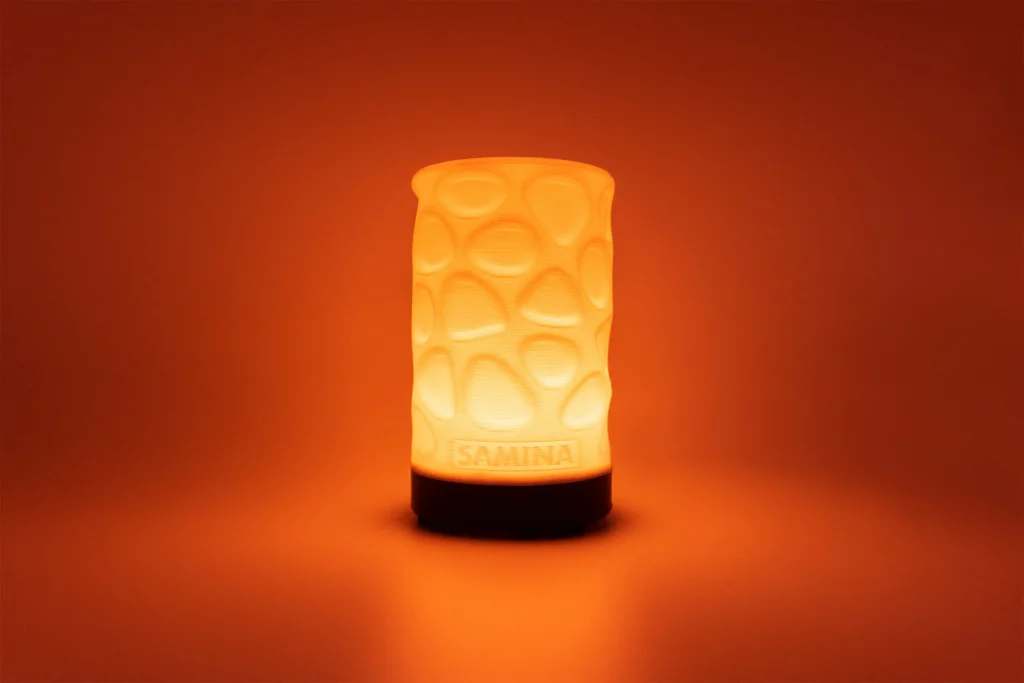
The product at a glance:
-
Sleep-promoting light spectrum of 1,600 Kelvin (fire / candle)
-
Free from blue light and flicker effect
-
Calms the nervous system
-
Synchronises the internal clock
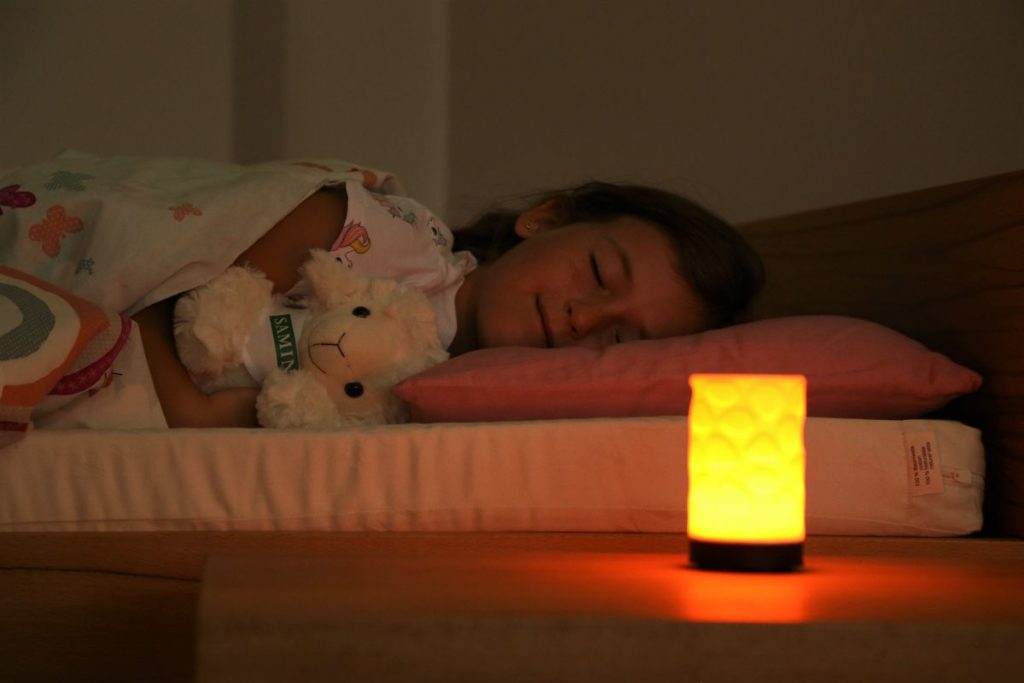
Do children sleep better with light?
Children's sleep is an exciting and important topic that concerns all parents. The right lighting in the evening and at night can have an enormous influence on our children's sleep behaviour and sleep quality. There are a few points to bear in mind:
Regulating the nervous system in the evening
Children's brains are developing at a rapid pace and have to process countless new impressions every day. It is therefore important to calm the nervous system in the evening and thus promote relaxation. A calming light in combination with the evening routine of changing the light can ensure better regulation of the nervous system and thus promote falling asleep and staying asleep.
Red light at night
If getting up at night cannot be avoided, it is important not to disturb sleep with blue light. A red night light helps us to fall asleep more quickly. In addition, it does not interfere with "night vision" and we can orientate ourselves without being dazzled.
Indirect lighting
If the night light is positioned outside the direct field of vision (e.g. under the bed or outside the room with the door open), it illuminates the surroundings without dazzling. Children can therefore recognise the contours of their room better and feel safer.
Avoid tunnelling effects
If we position the light in a dark corridor and leave it on at night, we literally create "light at the end of the tunnel". In this way, we avoid frightening shadows and darkness. The power consumption is so low that it is negligible.
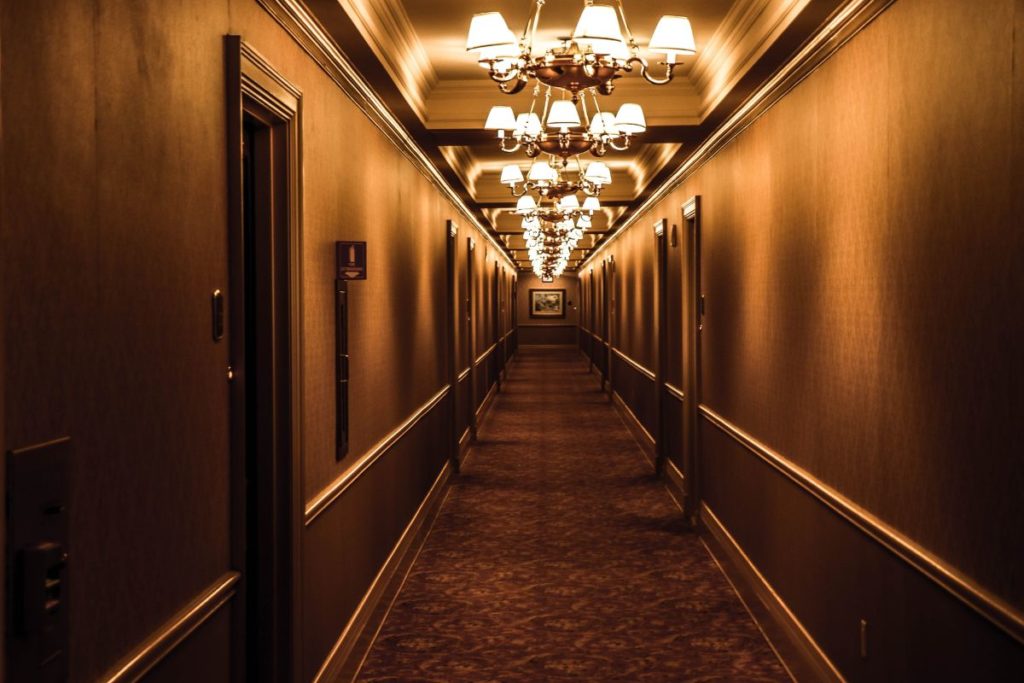
Light or darkness for optimal sleep?
Healthy sleep is as individual as each person - and so is the question of the right light for sleeping. In general, we recommend sleeping in the dark, which is confirmed by current research. Even supposedly small sources of light, such as street lighting through the window, can disturb sleep. Even if we do not consciously perceive the light at night, the body can register the light stimuli. That's the tricky thing.
However, it is not always possible to sleep in complete darkness, especially with children or babies. If you or your children need light, for example to get up at night, it should be red light with a maximum of 1,600 Kelvin that is positioned in the room so that it shines indirectly and thus offers the best orientation with low light intensity. This is the quickest way for you and your children to get back to sleep.
In the evening, you should only use warm light up to a maximum of 3,000 Kelvin to imitate nature and not disrupt melatonin production. Avoid blue light at all costs in the evening so as not to upset your internal clock. The most common sources are standard lighting at home, such as the bathroom mirror, which shines cold, blue light directly into our face. But screens such as televisions, laptops and smartphones are also disturbing sources of blue light. Here it is important to activate night mode, which filters out a large proportion of the blue light. Alternatively, there are blue light filter glasses that do this. Quality plays a major role here!
Get advice now
We are convinced that you will immediately notice a positive effect on your sleep quality with these simple adjustments. Your children will also fall asleep faster and sleep through the night better! Light is one of the most important factors for our sleep. We are happy to help you find the right lighting mood for you. Sign up for a 100% free and non-binding sleep analysis with our regeneration experts in the SAMINA shops.



